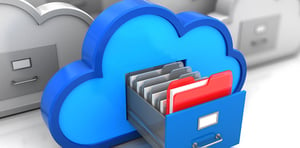IT Disaster Recovery Trends
We are seeing a fast-paced change in the IT DR due to new technologies and also availability of mobile devices. However, technologies that were considered cutting-edge last year are now standard offerings and it has become affordable to man businesses.
Major IT DR trends are spreading and evolving faster than ever, while vendors and customers alike do their best to keep up. In addition to the increasing frequency of natural disasters and disruption due to terrorism and cybersecurity attacks, businesses are being pushed more toward seeking for better and cost-effective IT DR software and solutions. It brings together the need for a good understanding of the trend as it is important for organisation to make the critical decision when it comes to determine what backup and recovery plans can do for them.
Business may want to examine the popular trends in disaster recovery when it comes to choosing a recovery solution. A business needs to match operational needs to ensure that its backup schedule, storage space, and other related strategies meet the schedules and needs of every staff members, from the back office and IT support to the front offices.
Cloud Technology

The proliferation of cloud technology has provided organisation and individuals with flexible storage space with payment plans to accommodate the rapid changes to the dynamic IT DR environment. The other critical factor is that the data is located off-site, ensuring improved security from single site impact due to natural disasters.
Accessibility from Anyway
With the implementation of cloud, a business can access its data from anywhere, allowing employees to work remotely following a disaster as well, which can help the business continue operations should fire or flooding destroy the office.
Virtualization
Another major trend in the IT DR space is Virtualization. Many IT and IT DR professionals are excited and see it as one of the greatest improvements to the continuity of businesses during a disruption.
With a virtual environment, a business can speed up recovery times by easily storing machine images, rather than worrying about repairing individual servers and computers.
Minimize Re-setup Infrastructure and Re-configuration of Systems
This not only reduces the time it takes to set infrastructure back up, but allows employees to work with their customized settings and personalized machines. Hence, reduce the wasting of setup time and cutting productivity for the need to change options on their computers at the offsite location.
Reduce Footprint of Computing Environment
This is one of the most used technology of the computing environments across a wide array of business organizations. It reduces the footprint of a organisation's data center while making available and increasing the number of recovery options to organisation as compared to the options available internally.
Lessen Recovery Protocols
Virtualization allows businesses to lessen the need to use lengthy recovery protocols. It further, dramatically shortens the recovery times while establishing repeated and successful recoveries.

User Mobility
From a disaster recovery standpoint, the "always available by your side" mobile devices such as smart phones and tablets facilitates the continuation of IT operations and business processes even after a disaster strikes.
Backup of Personal Devices
The mobile device proliferation has also increased the complexity of IT DR slightly as this trends increase. Now, it will be important that organisation remember to back up employees’ mobile devices as well. When disaster strikes, it will likely be mobility that helps a business quickly get back to work.
Able to Work Remotely During Outages
One of the positive impacts of the prevalence of mobile devices is that it gives people a greater ability to work remotely and communicate using their devices in an emergency.
Social Media
 Use As A Business Function
Use As A Business Function
the use of social media is becoming an acceptable trends to hit the workplace. In most organisation, social media can be used for key business functions such as customer service, marketing and communications. As such, it is vital to remember to back up this data when they are created in the public domain, for both compliance and operational needs.
Crisis Communication
The trend is that social networking will play an important role in the communications strategy especially during an IT disruption. For one thing, social technology adoption is increasing, and a greater portion of employees and customers have continuous access to social sites such as Twitter and Facebook.





